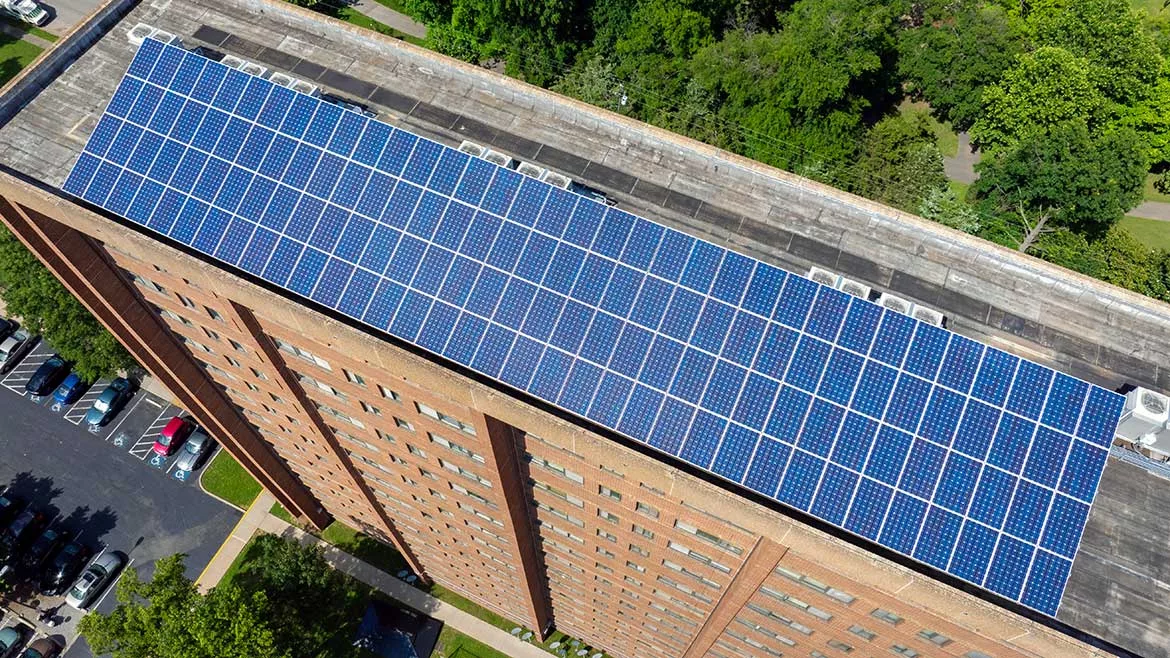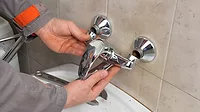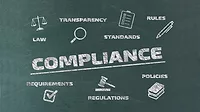Guard on Compliance | Misty Guard
The Age of Deregulation? Proposed Changes to Federal Energy Efficiency and Water Conservation Standards

Image courtesy of Bilanol / iStock / Getty Images Plus
As the second Trump administration gets underway, it has taken an aggressive approach to reducing the energy efficiency and water conservation federal regulations that have been the subject of numerous United States (U.S.) rulemakings and court cases over the last few decades.
The 1975 Energy Policy and Conservation Act (EPCA) provides the foundation for many of these energy efficiency standards and has been amended by multiple U.S. laws over the past 50 years. EPCA addressed the need to increase energy supplies, restrain energy demand, and prepare for energy emergencies. During the height of the 1970s energy crisis, EPCA was enacted to 1) create the Strategic Petroleum Reserve, 2) increase the supply of fossil fuels, 3) conserve energy supplies through energy conservation programs and regulation of certain energy uses, 4) improve the energy efficiency of motor vehicles, appliances, and certain other consumer products, 5) reduce the demand for petroleum products and natural gas, 6) provide a means for verification of energy data, and other initiatives. Of particular interest to the plumbing industry, the Energy Policy Act of 1992 (EPAct'92) added water conservation to the U.S. energy landscape. It was enacted to 1) improve energy efficiency in buildings, electric utilities, appliances, plumbing products, and industrial facilities, 2) address natural gas imports, 3) explore alternative vehicle fuels and electric vehicles, 4) develop renewable energy technologies, 5) research global climate change, and other initiatives.
In mid-May 2025, the U.S. Department of Energy (U.S. DOE) published notices of proposed rulemakings (NPRMs) to return energy efficiency and water conservation performance requirements to the levels enshrined in the laws. A theme permeating the NPRMs is that the U.S. DOE Secretary has tentatively determined that the current regulations are not economically justifiable. The NPRMs further state that the U.S. DOE Secretary is proposing a new policy to reduce regulatory burden by only using the performance requirements established by laws and rescinding prior rulemakings that updated the regulatory text. This approach to returning energy efficiency and water conservation regulations to the statutory levels enshrined in the authorizing laws creates an interesting challenge for manufacturers, contractors, and consumers as they navigate product compliance, availability, and performance.
These NPRMs are proceeding through the federal rulemaking process with the opportunity for public comments, which can be submitted through Regulations.gov. I've curated a list of the proposed NPRMs applicable to the plumbing, mechanical, and consumer products industries.
Notice of Proposed Rulemaking (NPRM) Title |
|
Standards for Conventional Ovens |
|
Proposed Withdrawal of Determination of Fans and Blowers as Covered Equipment |
|
Rescinding in Part the Amended Standards for Dehumidifiers |
|
Standards for Commercial Prerinse Spray Valves |
|
Standards for Faucets |
|
Withdrawal of Determination of Portable Air Conditioners as a Covered Consumer Product |
|
Test Procedures for Commercial Warm Air Furnaces |
|
Standards for Compact Residential Clothes Washers |
|
Withdrawal of Determination of Compressors as a Covered Equipment |
|
Standards for Consumer Furnace Fans |
|
Withdrawal of Determination of Miscellaneous Refrigeration Products as a Covered Consumer Product |
|
Standards for External Power Supplies |
|
Rescinding the Amended Water Use Standards for Residential Dishwashers |
|
Proposed Withdrawal of Determination of Air Cleaners as a Covered Consumer Product |
|
Rescinding the Amended Water Conservation Standards for Commercial Clothes Washers |
A nuanced, but important and distinct, approach in the NPRMs is the U.S. DOE Secretary's concern about using product standards as the basis of federal regulatory requirements. In the proposed rule "Standards for Faucets," the rulemaking states the following:
"… Even if DOE's prior decision that the ASME/ANSI Standard A112.18.1M–1996 maximum water use standards were economically justified based on the Department's adoption of those maximums in regulation, DOE is now questioning whether this activity resulted in an unconstitutional delegation of legislative power to a private entity. In general, the Supreme Court has dismissed the notation that Congress could delegate its legislative authority to private groups "to empower them to enact the laws they deem to be wise and beneficial for the rehabilitation and expansion of their trade or industries[.]… Such a delegation of legislative power is unknown to our law, and is utterly inconsistent with the constitutional prerogatives and duties of Congress. …"
The U.S. DOE Secretary cites A. L. A. Schechter Poultry Corp. v. United States (1935), where SCOTUS dismissed the notion that Congress could delegate its legislative authority to private groups. Additionally, Ass'n of Am. R.R. v. United States DOT (D.C. Cir. 2013) is cited where the D.C. Circuit noted that "[e]ven an intelligible principle cannot rescue a statute empowering private parties to wield regulatory authority."
The question is whether product standards, developed by non-governmental private groups such as consensus-based standards development organizations, will be used as the basis of federal energy efficiency and water conservation regulatory requirements. Today, product standards are used by Federal Agencies, code development organizations, and state, county, and municipal governments as the basis for energy efficiency and water conservation requirements.
In mid-May 2025, the U.S. Department of Energy (U.S. DOE) published notices of proposed rulemakings (NPRMs) to return energy efficiency and water conservation performance requirements to the levels enshrined in the laws. A theme permeating the NPRMs is that the U.S. DOE Secretary has tentatively determined that the current regulations are not economically justifiable.
If product standards are no longer used as the basis of these federal regulations, here are some questions the U.S. regulatory framework will have to address:
- What is the justification for using product standards by code development organizations and state, county, and municipal governments?
- Should there be consistency between U.S. states, counties, and cities to support interstate commerce?
- Should product design and performance requirements be locally market-specific and administered by the U.S. states, counties, and municipalities' levels of government?
- If documents created by non-governmental private groups, such as consensus-based standards development organizations and code development bodies, cannot be used in regulations, are states, counties, and municipalities going to have locally market-specific regulatory bodies to develop product requirements and safety and building codes?
- Will states, counties, and municipalities require manufacturers to pay product registration fees to offset an increase in administrative and staff costs?
- Will a U.S. locally driven regulatory framework increase the costs of manufacturer compliance and consumer prices?
The landscape of product energy efficiency and water conservation standards will likely change, creating a more complex regulatory framework for market access through a larger patchwork of regulations from 50 states, over 3,142 counties, over 109,000 municipalities, 14 territories, and the District of Columbia. The more variation in regulatory requirements will create challenges for manufacturers in determining the U.S. requirements for products and, ultimately, confusion for specifiers, contractors, and consumers.
For those looking for customized analyses or monitoring, call us at Regulosity. Our team specializes in detailed and personalized assessments to help you navigate and engage with the regulatory framework complexities.
Looking for a reprint of this article?
From high-res PDFs to custom plaques, order your copy today!







